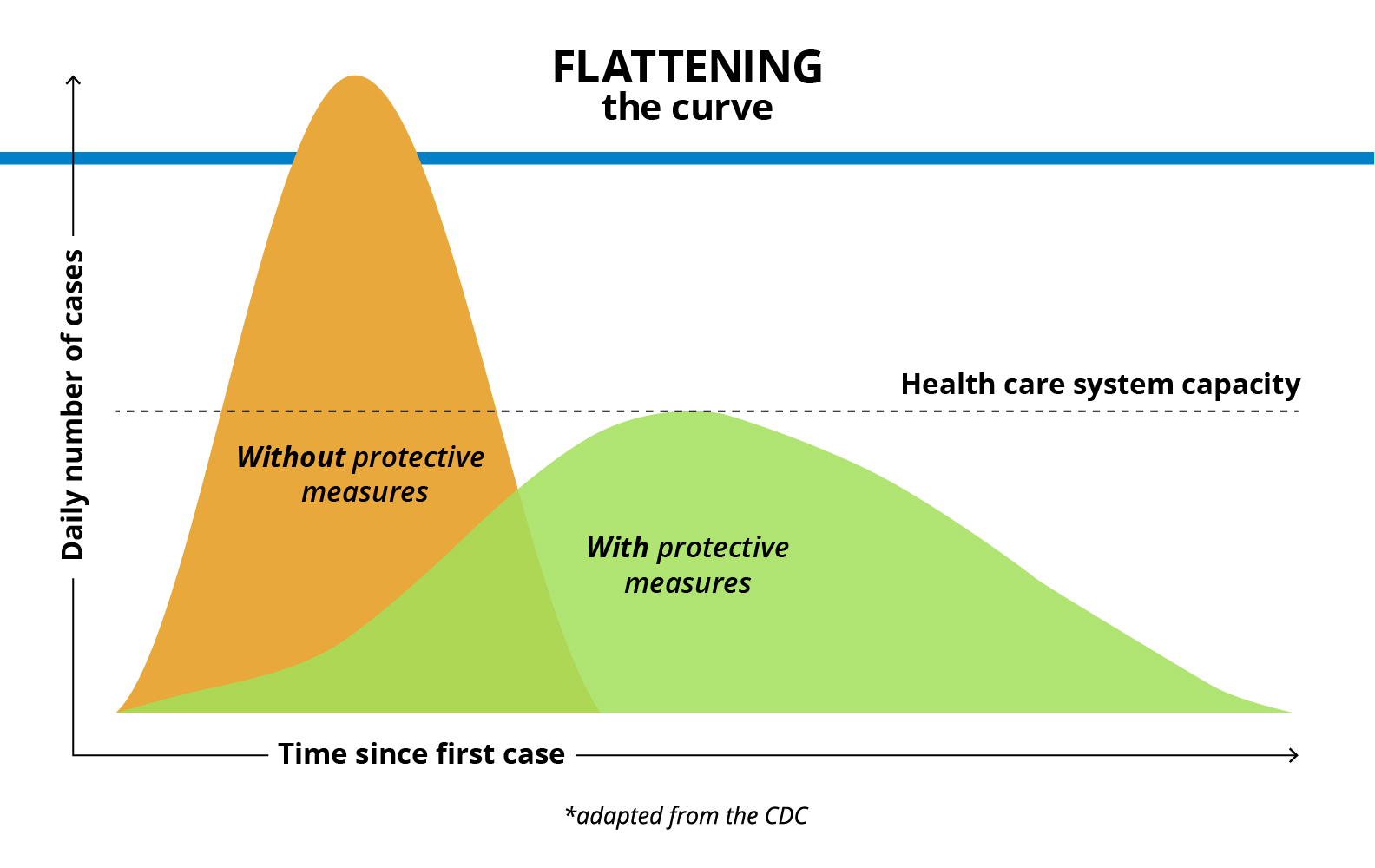As the novel coronavirus swept across the globe, new words and phrases came with it — “coronavirus,” for starters.
Here are explanations for few key terms you may be hearing in the news and from public officials.
Coronavirus
This is a large family of viruses, named because they have a “corona,” or halo, when viewed under a microscope.
Coronaviruses cause a range of diseases, from as mild as a common cold to as severe as Middle East Respiratory Syndrome (MERS), Severe Acute Respiratory Syndrome (SARS), and the new coronavirus disease (COVID-19).
Viruses in this family can spread from animals to people. Many coronaviruses are known to circulate in animals but have not yet jumped to humans.
The novel coronavirus causing the current pandemic — SARS-CoV-2 — first appeared in humans in Wuhan, China, in late 2019.
Sources: World Health Organization (WHO), the Centers for Disease Control and Prevention (CDC)
COVID-19
This is short for Coronavirus Disease 2019, the disease caused by the novel coronavirus (SARS-CoV-2).
COVID-19 illnesses range from mild to severe or even deadly. Symptoms to watch for include:
- Fever or chills
- Cough
- Shortness of breath
- New loss of taste or smell
Seek medical attention immediately if you have the following warning signs:
- Difficulty breathing
- Persistent chest pain or pressure
- New confusion
- Bluish lips or face
Source: CDC
Pandemic
The WHO defines pandemic as “the worldwide spread of a new disease.” It is what we’re currently experiencing with COVID-19.
Flatten the curve
This refers to taking community actions to slow the spread of new COVID-19 cases, so hospitals aren’t stretched beyond capacity.
Public health officials are concerned the number of COVID-19 cases may spike beyond what hospitals can handle at one time. Taking certain steps now — as simple as active handwashing and as hard as asking entire communities to stay home — may “flatten” the rate of new cases so health care workers have the resources to treat them.
Source: CDC
Social distancing
This is a public health practice that can slow the person-to-person spread of COVID-19 and help flatten the curve.
The CDC defines social distancing as:
- Avoiding public spaces where you may have close contact with other people
- Avoiding mass gatherings
- Maintaining distance (approximately 6 feet) from others
Some state and local governments have helped social distancing efforts by closing schools, restaurants, movie theaters and other places where people gather.
Individuals can help by cancelling large gatherings like weddings and only leaving the house for necessities like groceries and medication — even if they’re feeling healthy.
Source: CDC, Johns Hopkins
Self-quarantine
People who may have been exposed to COVID-19 may choose to self-quarantine. It means staying home, not having visitors and staying 6 feet away from other housemates for 14 days after exposure. Fourteen days seems to be the incubation period for this virus — meaning it’s believed to be enough time to know if a person will become ill.
Source: Johns Hopkins
Isolation
If someone does become sick, they should self-isolate. That means staying home and staying away from others — including housemates — by staying in a “sick room” in your house and using a separate bathroom, if possible.
This limits the chances of spreading the illness to others.
Source: CDC
Shelter-in-place and stay-at-home orders
Some cities and states have issued these orders. Details vary state to state but essentially strive for the same thing: social distancing on a large scale.
The orders generally require residents to remain in their homes, except for activities that are essential to their health or well-being, such as picking up groceries, visiting the pharmacy or getting medical care. Capacities at stores, restaurants or event spaces may be limited.
Click here for current information on New Mexico's response, or check your city's website for the most up-to-date information where you live.


